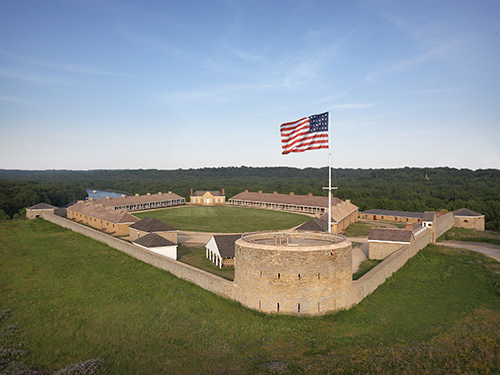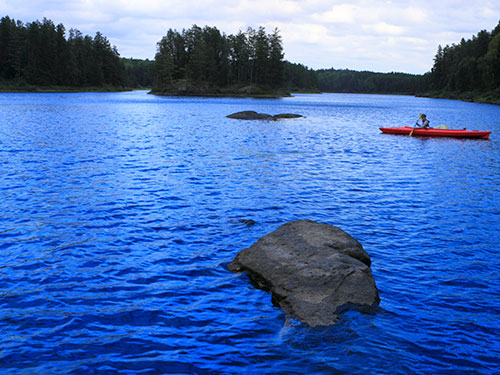Photographer Interview with Bob Rorke
Bob's beautiful nature photos can often be seen on Instagram, where he shares photos of Normandale Lake, Bush Lake Ski Jump, Bush Lake Beach, and Richardson Nature Center.
Whether you start at the Canadian border in Voyageurs National Park or meander along the Mississippi National River & Recreation Area's 72-mile stretch from Dayton to Hastings, Minn., you will most definitely discover why this Land of 10,000 Lakes (more than 11,000 actually) is truly a nature lover’s paradise and ideal for an outdoor-focused road trip.
Covering 54,000 acres, the River & Recreation Area is actually a “partnership park” which works with local, regional and state partners who own and manage land along the river that connects them. Joining forces to protect and preserve the great river’s wealth of national, recreational, historic and cultural resources, these partners offer a vast amount of recreational activities for visitors.
Most activities are coordinated out of the Mississippi River Visitor Center, which is located just off the lobby of the Science Museum of Minnesota® in downtown Saint Paul, a short 15-minute drive from Bloomington.  Mississippi National River & Recreation Area
Mississippi National River & Recreation Area
A few of the best activities on the route in and around the Twin Cities are biking, hiking and fishing at Crosby Farm Regional Park in Saint Paul and at Coon Rapids Regional Park, and of course, the Minnesota Valley National Wildlife Refuge here in Bloomington.
Established in 1976 to provide habitat for migratory waterfowl, fish and other wildlife species threatened by constant development, the refuge is an integral part of the 72-mile stretch along the river.
For sheer ease of navigation on your first trip to the refuge, it’s best to start at the headquarters located at 3815 American Blvd. in Bloomington. Ample parking along with an amazing visitor and education center will greet you. Chart your course with the available maps and download GPS instructions to use along the way. Then start walking, hiking or biking.
If you’re on the western side of Bloomington, you can find the locals’ favorite trailhead at 11255 Bloomington Ferry Road (yes, all of the refuge’s parking lots have addresses to assist visitors).
Simply park, and if you are on two feet, a road bike or inline skates, take the pedestrian bridge directly across the Minnesota River to the trail. If on wheels (mountain or fat tires), take a left just before the bridge and you’ll find amazing biking trails that could, if followed for about 15 or so miles, lead you east to the refuge headquarters. Hiking is also permitted on that segment of the trail.
Hiking and biking are the obvious transportation modes of choice for meandering throughout the refuge, which is made up of several “units” that crisscross the 14 counties it calls home. The refuge ranges from urban to rural, dirt trails hugging the edge of the riverbed, to paved or concrete stretches ideal for inline skating or biking.
Canoeing, boating, snowmobiling, hunting and fishing are all available, depending upon the season. In winter, put your cross-country skis on or pick up a pair of free snowshoes at the visitor center and see parts of the refuge that are inaccessible throughout most of the year.
Just south of the refuge is another famous, national stop: Historic Fort Snelling. Built in the early 1820s, Fort Snelling is a great place to learn about military history from before the Civil War through World War II, fur trade history, slavery in Minnesota, the U.S.-Dakota War of 1862 and much more. Its location—at the junction of the Minnesota and Mississippi Rivers—has been significant for centuries to many American Indian communities. Take part in daily period reenactments by costumed actors and watch as cannon demonstrations fill the air.
Just a short drive from the fort is Minnehaha Regional Park, one of the cities’ oldest and most popular parks featuring a 53-foot majestic waterfall, limestone bluffs and river overlooks.
Part of the Three Rivers Park District, Bloomington’s own Hyland Lake Park offers breathtaking prairie landscapes and a major body of water as well as a large play area, the Richardson Nature Center, Hyland Hills Ski Area, an 18-hole disc golf course and a 3-hole disc golf practice area. With so much to do, this park has endless opportunities for outdoor fun.  Historic Fort Snelling
Historic Fort Snelling
The St. Croix National Scenic Riverway is just a short drive away from Bloomington and offers some of the best river canoeing in the nation. With amazing smallmouth bass fishing along its shores, much of the 164-mile St. Croix River forms a border between Minnesota and Wisconsin.
The Minnesota portion of the river runs from St. Croix State Park just north of Pine City to Hastings, where it meets the Mississippi. Five adventure-filled state parks dot its landscape—including William O’Brien State Park—along with countless regional and city parks. River adventures run the gamut from quiet and remote just north of Taylors Falls, to ample motorboats, kayaks and canoes below the falls. Just beyond the dam, Interstate State Park offers self-guided trails along glacial potholes and awe-inspiring cliffs overlooking the river.
 Voyageurs National Park by George Burba The next stop on your Minnesota road trip is Voyaguers National Park in northern Minnesota. Voyaguers is uniquely water-based among its sister national parks and is only accessible by motorboat, canoe, kayak or sailboat. With 240 sites designated for houseboats, tent camping or day use, there are many options along the shores of four large, island-dotted lakes and myriad smaller lakes along the northern border. In all, there are 500 islands and 655 miles of shoreline to explore within the park’s 200,000-plus acres. While some of the 15 hiking trails are accessible by car on the southern border of the park, most trailheads with hike-in campsites necessitate a boat to reach.
Voyageurs National Park by George Burba The next stop on your Minnesota road trip is Voyaguers National Park in northern Minnesota. Voyaguers is uniquely water-based among its sister national parks and is only accessible by motorboat, canoe, kayak or sailboat. With 240 sites designated for houseboats, tent camping or day use, there are many options along the shores of four large, island-dotted lakes and myriad smaller lakes along the northern border. In all, there are 500 islands and 655 miles of shoreline to explore within the park’s 200,000-plus acres. While some of the 15 hiking trails are accessible by car on the southern border of the park, most trailheads with hike-in campsites necessitate a boat to reach.
These and many other regional, state and national parks are special places where coyotes, bald eagles, warblers and trout live next door to more than 3 million people. So take a break from the concrete jungle on your next visit to Bloomington. You won’t be disappointed.